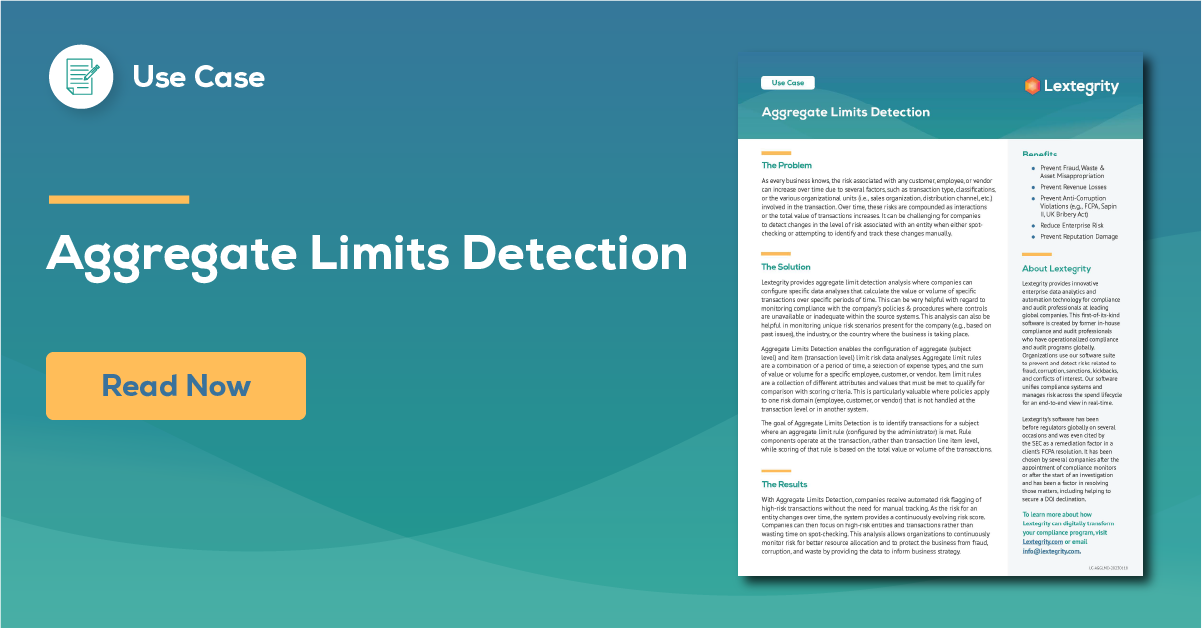Problem
As every business knows, the risk associated with any customer, employee, or vendor can increase over time due to several factors, such as transaction type, classifications, or the various organizational units (i.e., sales organization, distribution channel, etc.) involved in the transaction. Over time, these risks are compounded as interactions or the total value of transactions increases. It can be challenging for companies to detect changes in the level of risk associated with an entity when either spot-checking or attempting to identify and track these changes manually.
Solution
Lextegrity provides aggregate limit detection analysis where companies can configure specific data analyses that calculate the value or volume of specific transactions over specific periods of time. This can be very helpful with regard to monitoring compliance with the company’s policies & procedures where controls are unavailable or inadequate within the source systems. This analysis can also be helpful in monitoring unique risk scenarios present for the company (e.g., based on past issues), the industry, or the country where the business is taking place.
Aggregate Limits Detection enables the configuration of aggregate (subject level) and item (transaction level) limit risk data analyses. Aggregate limit rules are a combination of a period of time, a selection of expense types, and the sum of value or volume for a specific employee, customer, or vendor. Item limit rules are a collection of different attributes and values that must be met to qualify for comparison with scoring criteria. This is particularly valuable where policies apply to one risk domain (employee, customer, or vendor) that is not handled at the transaction level or in another system.
The goal of Aggregate Limits Detection is to identify transactions for a subject where an aggregate limit rule (configured by the administrator) is met. Rule components operate at the transaction, rather than transaction line item level, while scoring of that rule is based on the total value or volume of the transactions.
Results
With Aggregate Limits Detection, companies receive automated risk flagging of high-risk transactions without the need for manual tracking. As the risk for an entity changes over time, the system provides a continuously evolving risk score. Companies can then focus on high-risk entities and transactions rather than wasting time on spot-checking. This analysis allows organizations to continuously monitor risk for better resource allocation and to protect the business from fraud, corruption, and waste by providing the data to inform business strategy.







